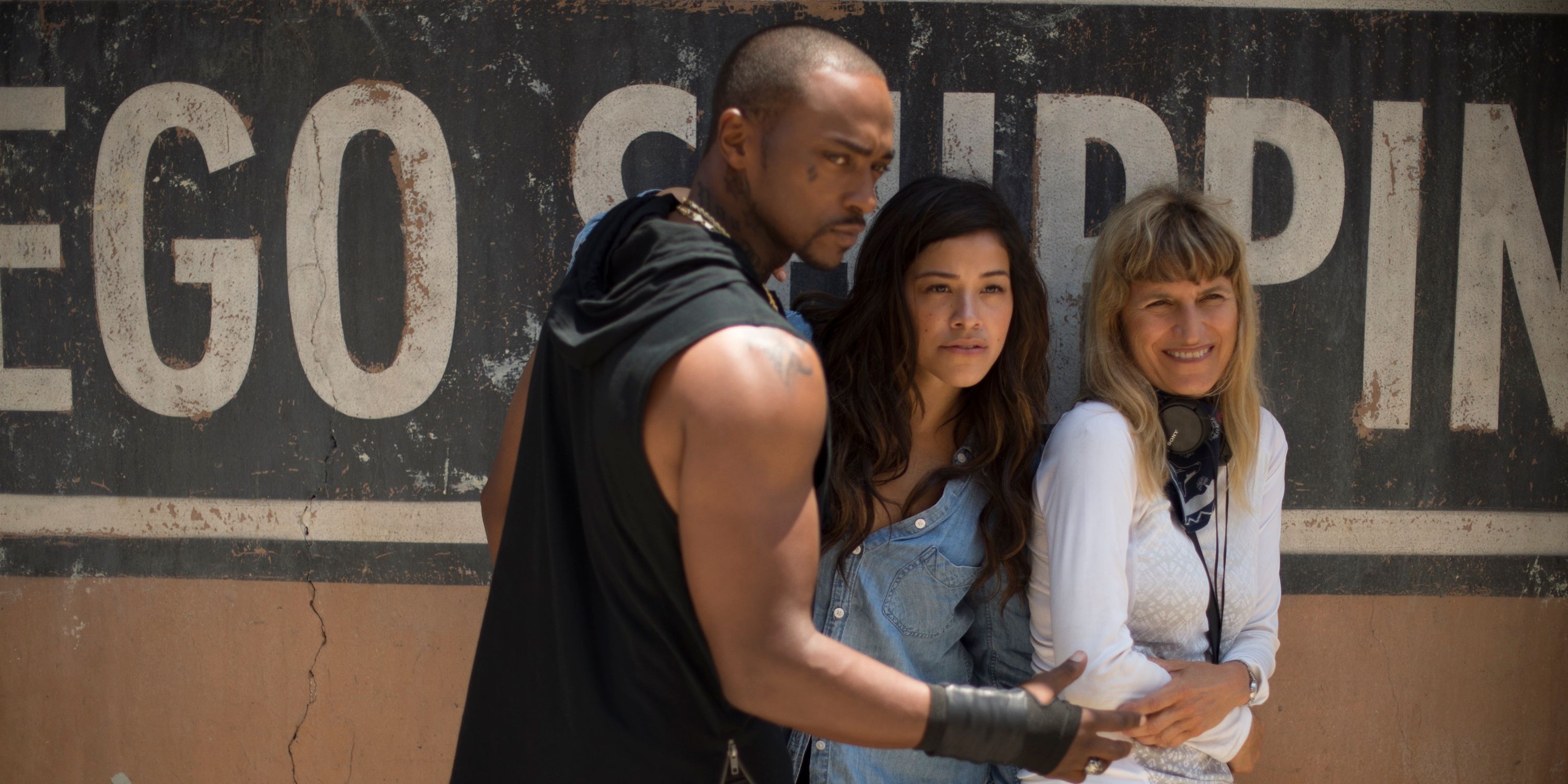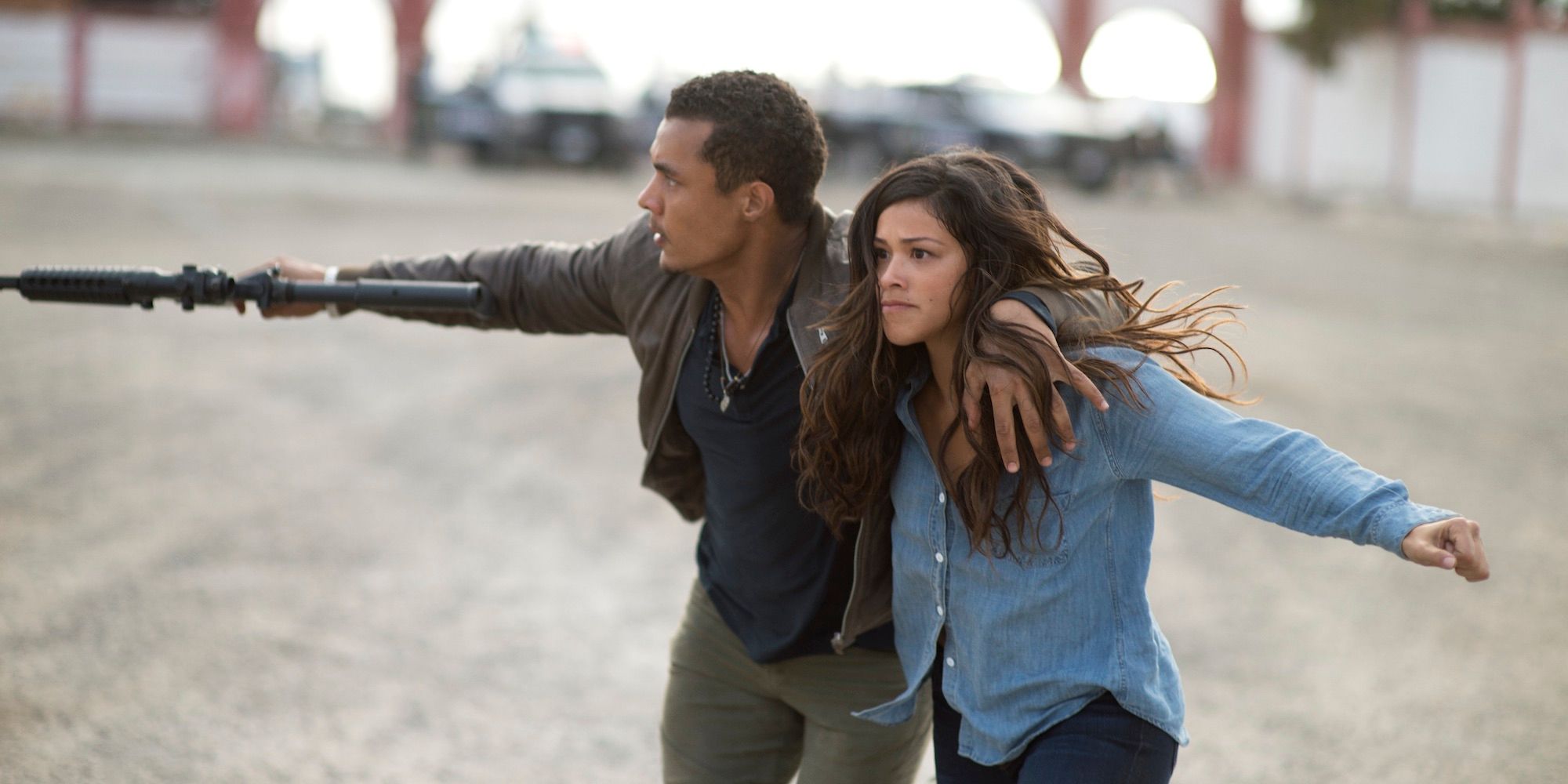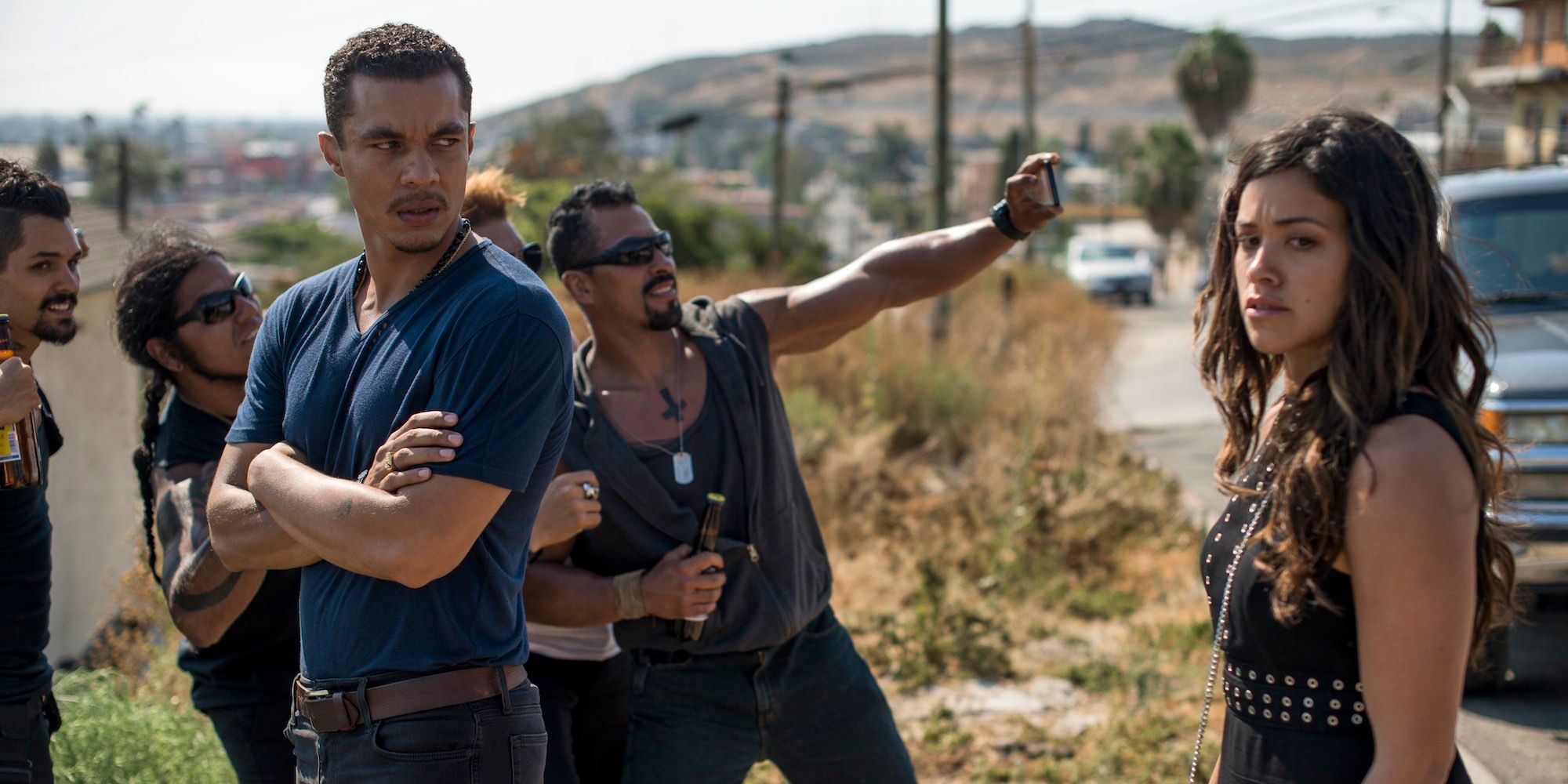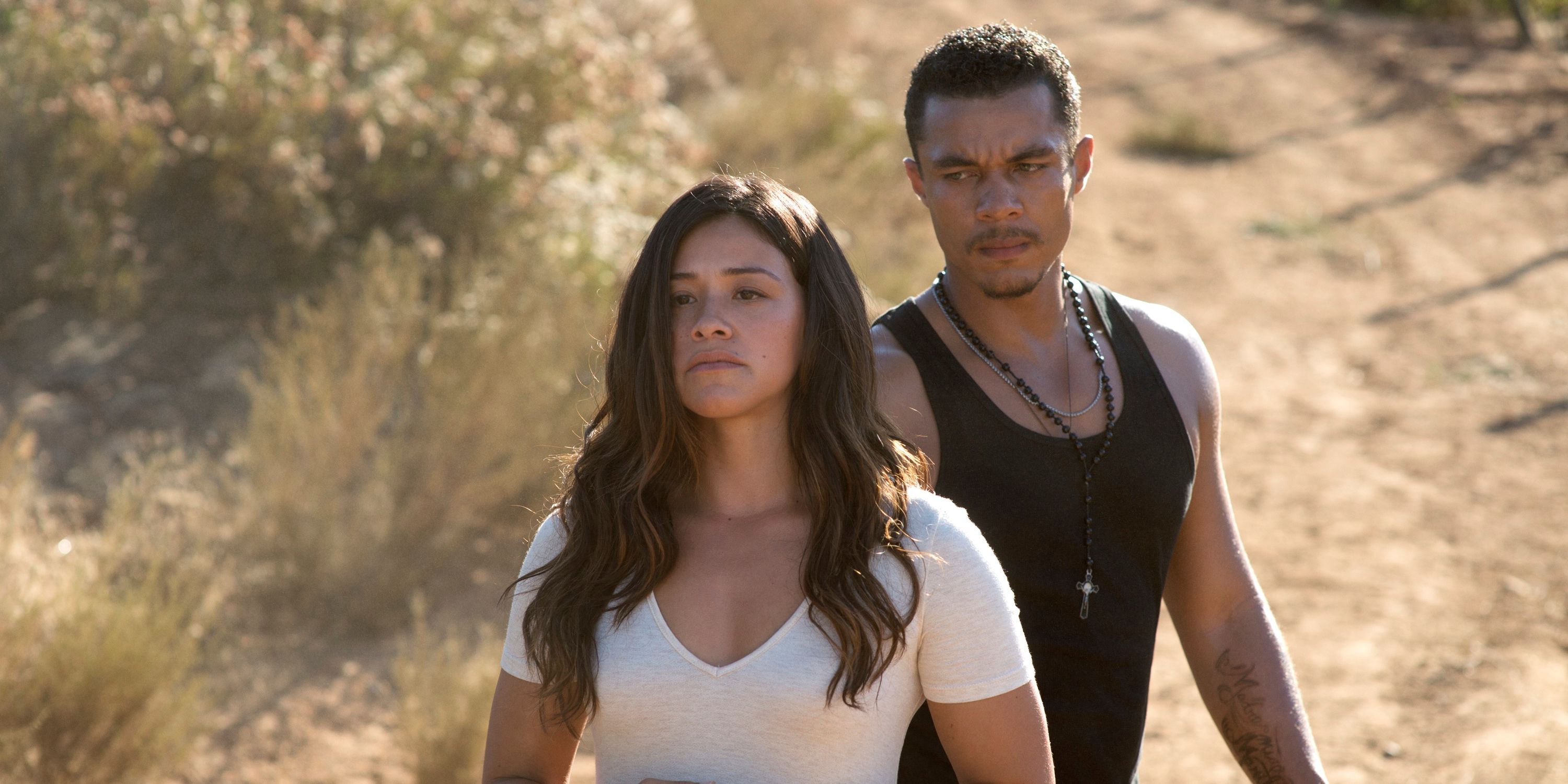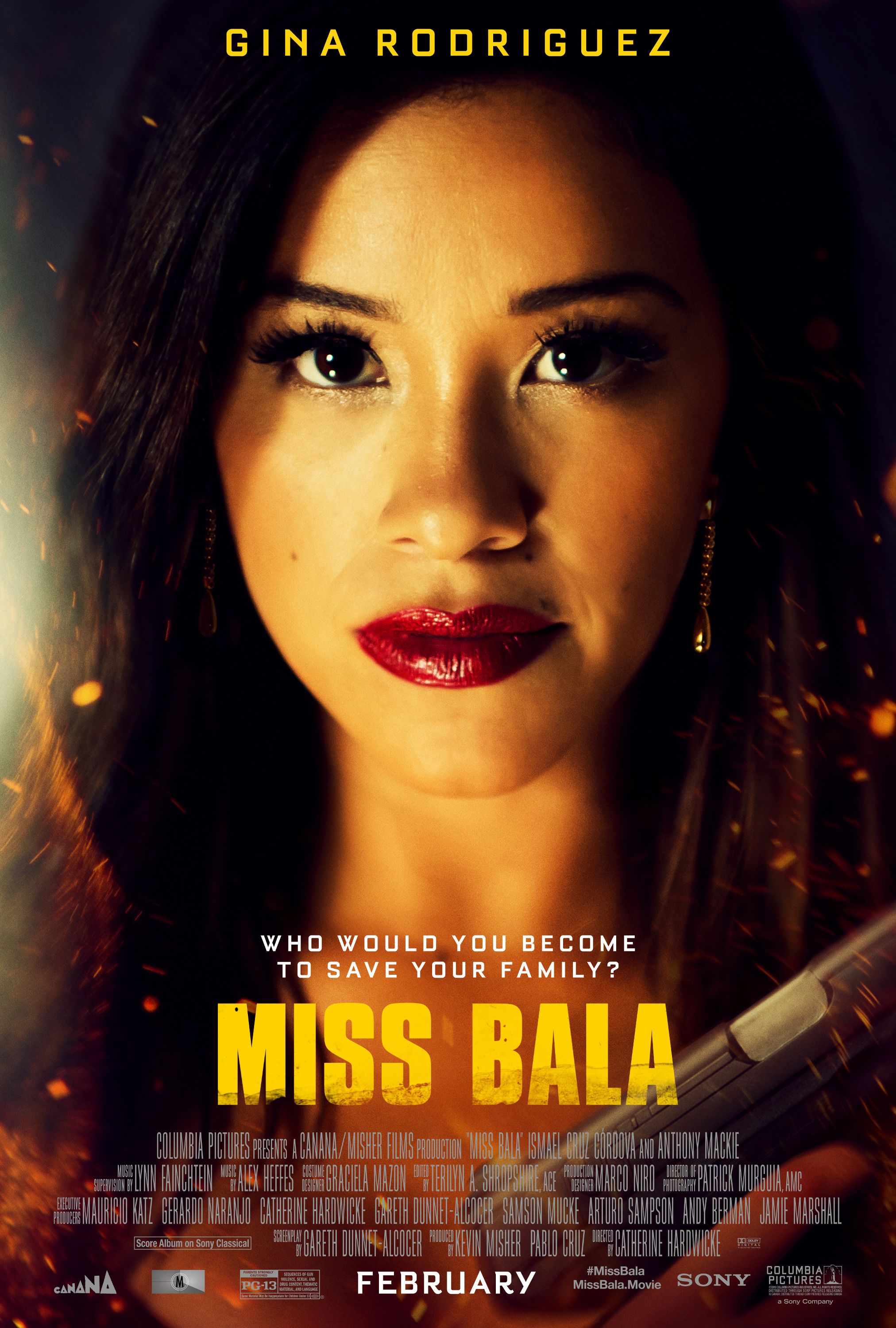Catherine Hardwicke started her film career as a production designer on films like Tombstone, Three Kings, and Vanilla Sky. She has gone on to direct movies such as Thirteen, Lords of Dogtown, and the fantasy-romance Twilight, the first film in The Twilight Saga. Her latest film is Miss Bala, an action-thriller starring Gina Rodriguez, Ismael Cruz Cordova, and Anthony Mackie.
Screen Rant: Okay. So, this is going to be super conversational. I'm just going to kind of pick and choose things.
Catherine Hardwicke: Okay. I'm ready.
Screen Rant: You've been a trailblazer for female directors aspiring to direct large-scale material. What advice would you give upcoming female filmmakers that want to break into the action genre of films?
Catherine Hardwicke: Well, what I try to do is just like kick ass on the preparation. Study action. I studied all other action movies. I even storyboarded and wrote down all the shots that they use, so I start to learn. “Okay. Wow. Why did, how did that work? Oh, low angle. Cool. Splash. They added water and the motorcycle went through that.” And that's one thing that I liked to do. And then I also like to do action staff in a weird way. Like I go mountain bike riding. I just did this crazy ass trek up in the mountains in Peru. Holidays surfing. Whatever it takes. Learn to rock climb, be part of it. So, that you actually feel it. Almost like method directing. So, just be super prepared. When you go to the meeting for the studio, have tons of ideas, and “here’s what I did the other day. Here's a picture of me hanging off that rock.”
Screen Rant: That's awesome. Many will be shocked to find that the Twilight director is behind a groundbreaking thriller. What can audiences expect from your visual palette for this project, Miss Bala?
Catherine Hardwicke: One thing that was neat was we got to really film it in Tijuana. The real place. Tijuana, Valle de Guadalupe, even Rosarito, Playas de Tijuana. So, we had the real texture. And for me, I wanted it to not look like the dusty vision of Mexico or something. I want it to show the kick ass modern architecture that's there. Show the cool new stuff that's going on there mixed with the old. So, that you really get that richness of the cultural experience. And by being able to film in the real place, with the real people, all the local people were involved. And they're all playing parts and everything. Nobody came from the US, like four of us came from the US. I went there for five months and never came back, except for one day to the US. I just lived in TJ the whole time. And there's a vibrancy, it's exciting. It's the biggest, busiest border in the world. So, you got a lot of shit going on in that place.
Screen Rant: I spent a lot of time out in Tijuana and Rosarito area, especially in college. I forgot most of it, but I've spent a lot time there. The drama in this film, it could be happening right now. What scenes were the hardest to film and from an emotional and technical standpoint?
Catherine Hardwicke: Well, that big scene that we did in the bull ring, the big shoot out. That is literally right next to the border wall, right next to the ocean. And it's also in a, I guess, a dangerous neighborhood because it was almost real life. We had to get shut down once as a police chase went through our set. So, real stuff like the movie was going on. And when people heard us shooting fake guns, that was all posted. “Oh s***. More cartel.” I mean it was like real life imitating—So, that one was technically, you had a lot of logistics. We had the sniper building, another sniper on top, the cop cars blowing up, and I have to keep it safe and not scared. And also, the biggest thing was to make it believable that Gina, a woman that’s not trained, she's not a Navy Seal, she's not Atomic Blonde, she is not a hitman, she's just a normal person, that she could figure out “What am I going to do to save myself? How do I duck down? Do I run?” All those things, trying to make it real.
Screen Rant: You spoke about with all that stuff, kind of life imitating art, did the two worlds ever blend? Like, did you ever think, “Oh, wow, this is a part of the movie. Or is this real life?”
Catherine Hardwicke: Actually, the second unit director was in the bull ring one day and there were three cop cars that we had, but suddenly five more came in. And he thought, “What? Did we get some extra money? Did we suddenly afford five extra cop cars?” No, they were the real cop cars telling us to shut down. So, yeah, sometimes it was bizarre. And then one day I was up in the helicopter filming, like the end, all the helicopter shots at night. And the helicopter pilot, I hear over the headphones, he goes, “Hey, do you think you got the shot? Because I think the cartel is going to start shooting at us.” I go, “Dude, I think I got the shot. Let's move on.”
Screen Rant: Oh, my gosh, that's intense.
Catherine Hardwicke: And then I said to the pilot, “Are you wearing a bulletproof vest?” “What good would that do? They’d just shoot us down anyway.” I'm like, “Okay, awesome.”
Screen Rant: You've been open in the past about your scrutiny and budget cuts from Twilight. How did your experience differ this time around?
Catherine Hardwicke: This one, we had a lot less money than Twilight and we had budget cuts on this one too. But this time I decided, I got to just try to think positive no matter what. It's a challenge, solve the problem. Don't worry about— “Okay. How do I make it work?” And so, we had drones and we had a helicopter and tried to make it look as big as we could even on a tighter budget.
Screen Rant: Interesting. Now, well it's not necessarily biographical, Miss Bala is set in the backdrop of Mexico. With all the madness and news in Washington, what do you hope audiences take away from this movie?
Catherine Hardwicke: One thing we tried to show is the vibrancy and the richness of Mexico. Embrace other cultures. Love it. That's one thing. And that's just in the background. And then the idea of, in a way, this woman that is caught in a crazy thing, but she doesn't get depressed, lose sight of it, or lose sight of her humanity. She only takes up a gun when she has to in a self-defense situation. So, she tries to be humane, and find a way out of this problem, and save her friend.
Screen Rant: You have a great eye for spotting young talent like Robert Pattinson and Kristen Stewart. What was it about Gina that she was able to bring that wasn't necessarily there on the page?
Catherine Hardwicke: Well, Gina, we know her in Jane the Virgin and she's awesome in that. But it's a different, very different character. So, when I met with Gina, I saw another side. The real Gina's different from Jane. And the idea that she was going to do this transformation, she eventually has to go into a beauty pageant, has to like kick ass and dress up and glam up. But you can see Gina, when she does her carpet, red carpet and all that, she gleams up good [LAUGHS]. That girl is gorgeous. But she can go all the way from looking like a normal fun, nice person next door to like super badass gorgeous chick. So, I knew she was going to do it all. And she was so into it and cared so much about every moment. That the character would be active. Actually doing something. Not passive. And not reactive but making a plan. “Here’s how I'm going to get out of this.”
Screen Rant: Interesting. Now, Gloria [Gina Rodriguez’s character] finds herself up against the cartel and DEA. What is it about these organizations that surprised you the most in your research?
Catherine Hardwicke: Well, it's interesting, and of course we're even learning more, with the whole El Chapo trial. And learning even more intricate things about these organizations. But they’re a little bit more rogue in a way. A little more creative than you think. There is room for innovation or doing something out of the box. So that's—Especially, our little organization, was a bit younger and youthful. Our cartel leader, Lino, he thinks he can do better than the old school guys. And he thinks he’s even better with technology, and this, and having this young crew. So, that was kind of interesting. Let us be a little bit free there.
Screen Rant: I found Lino's character very intriguing. Because it's almost like I was starting to get this weird Stockholm Syndrome with them too and started to care about them. Talk to me about that character specifically. Because it comes from out of left field where you start actually caring for him. And you see that Gloria, the DEA just leaves her, leaves her to whatever happens.
Catherine Hardwicke: Yeah, dismisses her. And so, she's like, “This is the only person that cares about me now.” And that's why she has to go back for him in the bull ring. And she knows that there is that bond. I think they have that bond of shared identity. Not gringo enough to be gringo. Not Mexican—And I think that [Ismael Cruz Cordova], when you were talking about like discoveries to me, I think he's like a great discovery. Because he's just got a lot of layers. He's fun to watch. Like you said, he starts to draw you in and you're like, “Oh my God, I like this guy.” He's funny, he's witty, h’s wacky. He's got his own sense of humor. He's focused. He had this tough childhood. So, you're just like, “Oh, yeah” [LAUGHS].
Screen Rant: It's such an intriguing character though. Because it's kind of out of the norm of what you would think with cartel, but any kind of like mafioso type of thing. And the character’s just so charming and grows on you, in a bizarre symbiotic way.
Catherine Hardwicke: Yeah, he does. And of course, Ismael, he came in and we improvised different scenes. And I just really thought, “Okay, he's got to do it.” Because he’s just fun to watch. And he keeps it alive.
Screen Rant: So, in the original version, what did you want to make different in this version? Or, what were pieces that you wanted to bring in from the original version? Maybe stuff that you wanted to leave out.
Catherine Hardwicke: The original version, I felt like Gloria’s character in the original, not named Gloria, that she was very passive. I'm like yelling at the screen, “Don't let him do that to you! Kick him in the balls!” When I was watching it, I was like, “Oh, no.” I thought that the film is beautiful and beautifully shot and everything. But it's kind of like the old school version Mexico. The dustier version and the passive female character. I mean it came out in 2011. So now, I think the world has come to where young girls are even wearing, little girls are wearing empowerment t-shirts. Like, we don't want to see a heroine anymore that's just going to sit there and be like, “Okay, go ahead and do all this stuff.”
So, I think that was one of our big challenges. To show her like, 2019, more active, more clever. And then I think the identity thing that the writer added was really cool. That they were both from the US. They’ve lived on both sides of the border. The US and Mexico. And that's more interesting than somebody maybe just living only in Mexico. Because now you get the global thing. And every person, like I was talking to the dentist the other day, and she's from Vietnam but she didn't grow up there. And so, she speaks Vietnamese, but when she goes back to Vietnam, she doesn't really fit in Vietnam. She doesn't really fit in here. So, it's not just the Latinx, it's a huge part of the global population feels that. Searching for their identity.
Screen Rant: That's a great point, actually. Gina goes through this transformation throughout this whole movie right before your eyes, from the beginning to the end. It's almost like she becomes a different person. Talk to me about the journey of Gloria.
Catherine Hardwicke: That’s so interesting. Because as a director and an actor, you just want to get inside that character. She's the main character and so I just want to feel like I'm in her head all the time. So that's how you compose the shots. How do you stay in her perspective? And actually the camera moves changed for each act. The first act, it's more her normal life. It's more like studio mode. The cameras mounted, either on a steady-cam or on a dolly. But the middle act, where all hell breaks loose and keeps getting rushed, we're off mount, we’re handheld. We’re just in there with her. And then, by the last act, she has a plan. “I'm going to go in, I'm going to do this, and I'm going to get my friend.” So, it goes back to a little bit more steady. So, we were trying in every way we could, with the camera, with compact composition, and everything, to feel what it feels like to go through this crazy thing. She has nobody she can confide with either. Because she's undercover. Like double spy, double infiltration. So, that was fascinating. That's what's great about Gina. I mean, her face and her being, can convey so much.
Screen Rant: Absolutely. And last question, you leave this kind of open ended with what could happen in the future. I don't want to give too much away, but Anthony Mackie plays a prominent role in that. Have you already been thinking about a possible followup to this?
Catherine Hardwicke: Yeah, there's some cool stuff we have in the back. Because one thing that's interesting about a Latina heroine like this, she can actually fit into many different countries. If she needed to go to the Middle East, to France, to Russia, to even-- Gina goes to Thailand, people think she's Thai.
Screen Rant: Really?
Catherine Hardwicke: Yeah. Well, she kind of has eyes… And so, I think it's kind of a neat international character that could blend in and go and do all kinds of intriguing things.
Screen Rant: That's awesome. I would love to see that. It’d be great.
Catherine Hardwicke: Right? A female Jason Bourne.
Screen Rant: Well, thank you so much for your time. Congratulations the film.
Catherine Hardwicke: Thank you, so much. Appreciate it.

